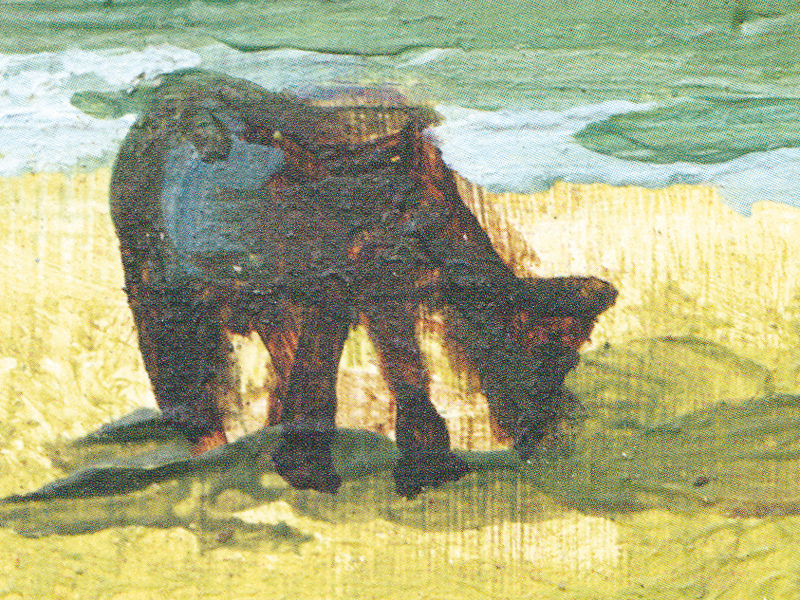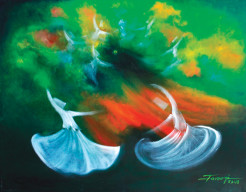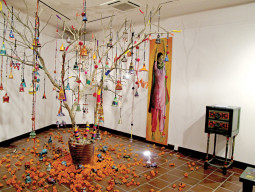
Rebel Angel, a posthumous monograph featuring Asim Butt’s art practices, is a work-in-progress that gives an orientation of the artist’s body of work but lacks chronology. The editor, Nafisa Rizvi, however, takes the reader into confidence about this missing link from the get-go. In her introduction to the collection, Rizvi admits that the book challenged the curators — because the length of Asim’s career was cut short, his body of work can only be measured in its depth. Hence, the viewing lens of the book in terms of a clear theme is distorted.
Asim Butt was an enigma. His work embodied an unfiltered raw artistic expression and hence, his thematic practices were diverse enough to become a challenge if they are categorised. While the compilation accepts the dilemma it doesn’t fall victim to it. The fact that the artist’s uninhibited artistic expression was eventually constrained by labels such as controversial and even censored at times is another hindrance to a clean compilation.

Asim’s work was a speculative use of mediums, material and form. The fact that he used everything from oil on canvas to charcoal on paper and spray paint on benches reflects a process of growth and a constant restlessness to process the world in order to communicate with it. His instinct as an artist, however, was strong enough for him to retain the essence of the various mediums he used, while mastering them and understanding the value of each. Most artists arrive at the abstract as part of their evolutionary process, or they begin to strip away at the essence of their chosen material until it is unrecognisable. Asim was brave enough to use vibrant canvases, elaborate imagery or rough stencils on walls 10 years after he was required to prove his skills as an art student at The Indus Valley School of Art and Architecture. He became more comfortable with his own technique and used that to enrich his vast language.
This monograph, which meanders on purpose, does the best it can in terms of curatorial decisions. The controversial nature of his work overwhelms any attempt to critique it in terms of his artistic development and expression. The lack of an organisational chronology is, however, confusing and fails to give a clear view of his artistic development and the shift in his influences. For example, an oil on canvas studying anatomical forms is right next to what was supposedly part of ‘The Stuckist’ movement, that aims to produce art with spiritual value regardless of style, subject, matter or medium and the Karachi chapter for which was founded by Asim in 2005. As a result, the collection does not weave a compelling narrative, despite the essays that put him in context as a student, a friend and a colleague.
Rebel Angel is not a collection that could be used as a reference when studying Asim Butt’s creative practice. However, it is a tribute — an attempt to fill the artist’s absence since the collection of both essays and the curatorial process of his work involved artists, practitioners and writers who had been personally associated with him.
Amna Iqbal is a visual journalist at The Express Tribune. She tweets @amna_iqb
Published in The Express Tribune, Sunday Magazine, September 14th, 2014.


















1713272658-0/Copenhagen-fire-(1)1713272658-0-270x192.webp)


1713268762-0/Netflix-(3)1713268762-0-270x192.webp)






















COMMENTS
Comments are moderated and generally will be posted if they are on-topic and not abusive.
For more information, please see our Comments FAQ